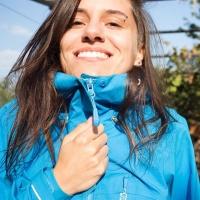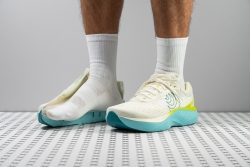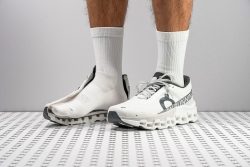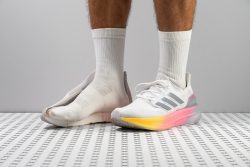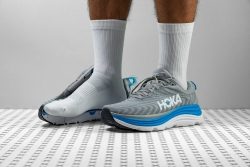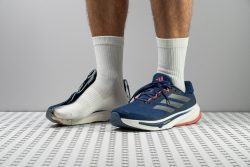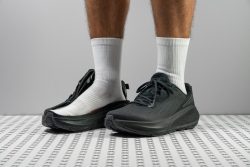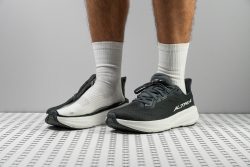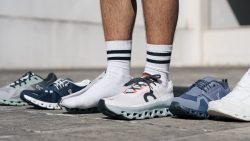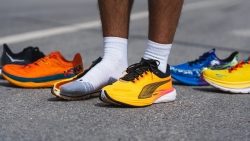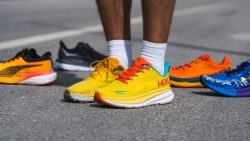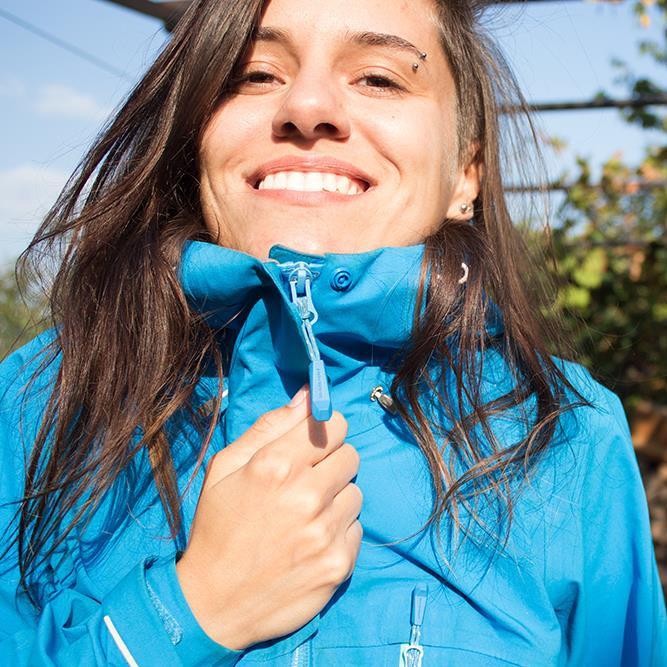7 Best Running Shoes For Wide Feet in 2025
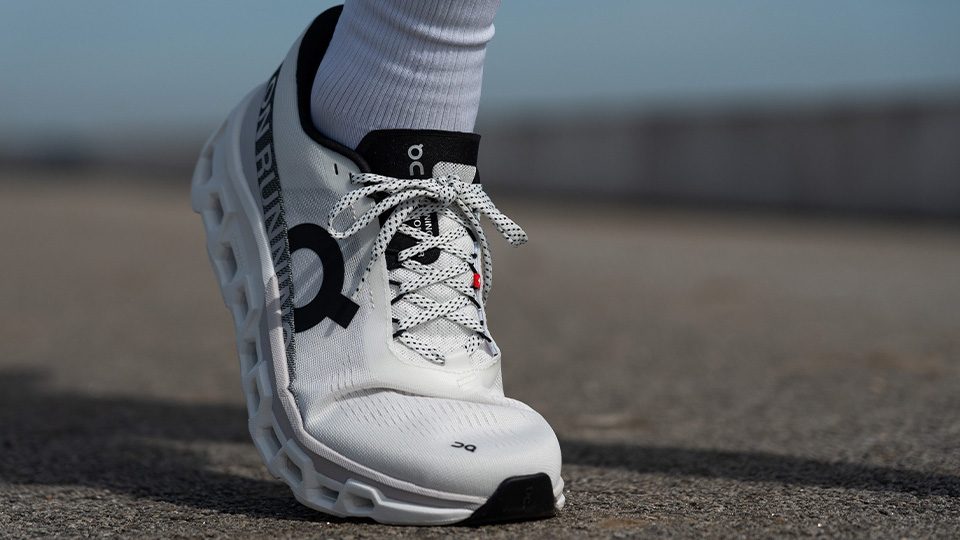
We buy shoes ourselves. We earn commissions when you buy through us, at no extra cost. Why trust us
Not all runners are the same, and neither are their feet. Some are narrower, some are wider. And because it’s not a one-size-fits-all approach in running shoes, there are models made specifically for wide feet.
These shoes have an accommodating fit, and we measure their width exactly where the shoe is the widest. We have carried out an intricate process of testing these wide running shoes so we can separate the picks of the brunch from the mediocre ones. And if you’re looking for the greatest in various specific categories, we’ve got just the list for you.
How we test running shoes for wide feet
Before we decide which running shoes for wide feet make the cut, we painstakingly review each one to ensure we only give you the best. We also test all the shoes in our independent shoe lab.
Here's what we do to make sure our best picks are really the best ones out there:
- We buy them with our own money to make sure we give you a non-biased review.
- For fit, durability, and performance tests, we perform countless runs before giving our feedback.
- We cut shoes in half and into smaller pieces to properly test them using different tools and machines. This allows us to describe each shoe with over 20 lab data points.
- We publish all our data in a way that allows you to compare different shoes with each other or to see how the shoe you're interested in compares to the averages from the given category.
Best running shoes for wide feet overall
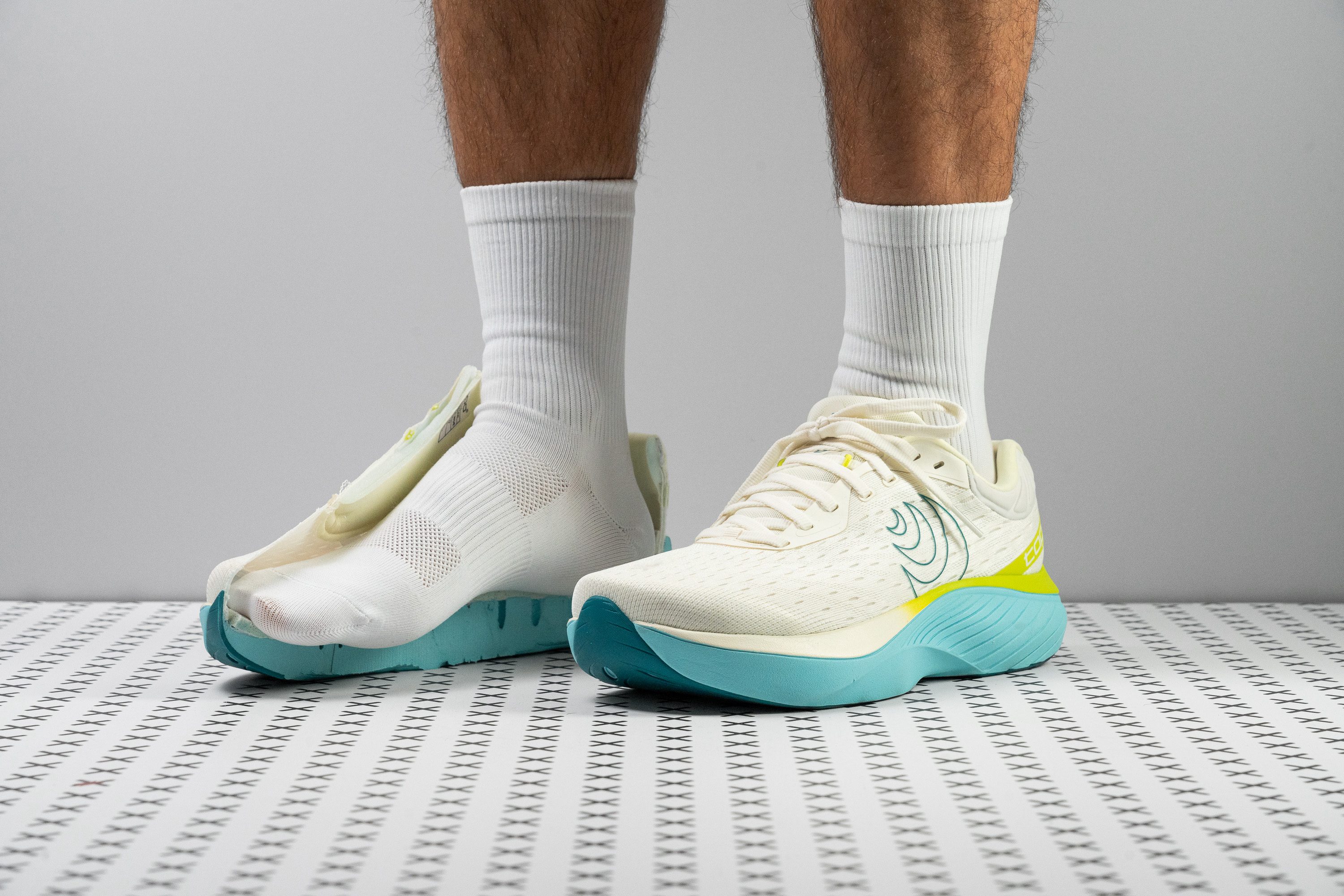















































What makes it the best?
The Topo Atmos is a wide-footed runner’s dream with its generous dimensions, cushioned feel, and light yet stable ride. Our feet felt so comfortable during our runs and our lab test validates it’s a maximalist workhorse, making it our top pick among wide running shoes.
We believe even square-footed folks have room to breathe in the broadest part of the toebox, measuring 98.5 mm near the ball of the foot, a whole 3.0 mm wider than the average! This section also relates to the shoe's overall width, and we measured the 119.1 mm forefoot and 96.8 mm heel to be more spacious than average. The platform offers generous room to find our footing, making the ride stable despite the shoe’s height.
Speaking of the shoe’s stack, we measured it to be 37.8/32.5 mm tall, cushioning each landing we made regardless of footstrike. Impact protection was excellent even if we ran longer than expected. Surprisingly, it took time before fatigue set in because of its light 9.7 oz (275g) weight. Despite its size, we’re amazed it managed to maintain a sub-10 oz. figure.
However, it lacks the energy for those who want to push the pace. Those seeking responsiveness should find another pair.
Pros
- Max-cushioned comfort
- Ultra-spacious toebox
- Stable ride
- Premium Ortholite footbed
- Midfoot-friendly geometry
- Lightweight for its huge size
- Great for easy long runs
- No heel slippage
Cons
- Lacks energy return
- Not for narrow-footed runners
- Could be a bit more flexible
Running shoes for wide feet with the best shock absorption
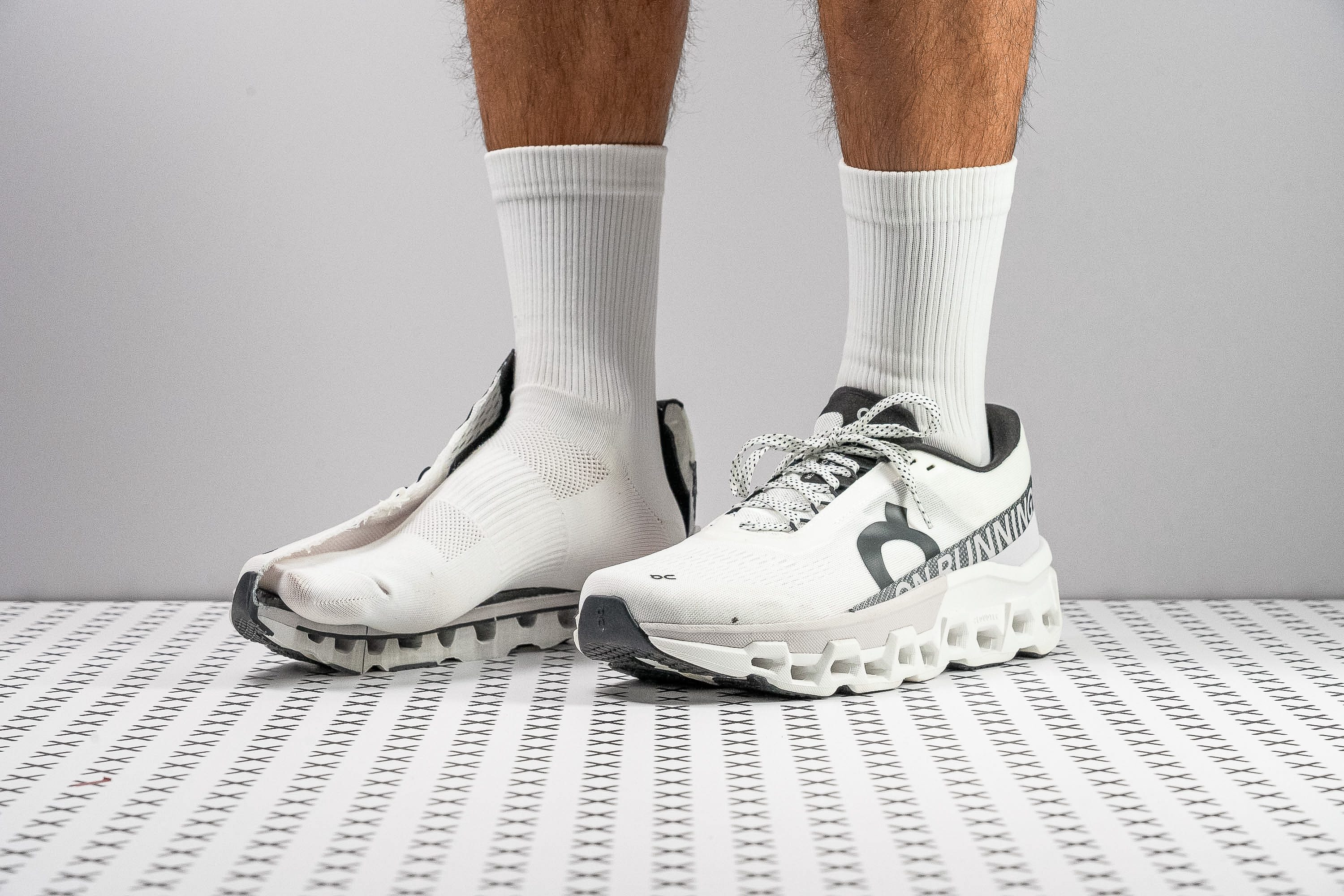























































What makes it the best?
The On Cloudmonster 2 is made for long mileage with its lasting comfort, generous dimensions, and premium build. Lab results confirm its generous cushioning has leg-saving magic, making it our wide running shoe with the best shock absorption.
We measured the Cloudmonster 2’s stack height at a monstrous 37.9/31.3 mm, significantly offering a buffer between our feet and the ground. While the foam itself is well-balanced, the midsole feels softer due to CloudTec’s compression. We measured its shock absorption and recorded 137 SA (heel) and 115 SA (forefoot), both high enough for sustained comfort during long runs.
The shoe feels very spacious, so it's accommodating to those with bunions and broad feet. We measured our solidified gel mold, and it revealed the maximum width is at 98.5 mm, much more forgiving than the 95.3 mm average.
We pounded the pavement endlessly, and the Cloudmonster 2 still looked pristine. Testing it against our Dremel, it showed insignificant damage in the upper, so we awarded it the maximum 5/5 toebox durability. In the outsole, it showed 20.0% less wear than average, cementing its wear resistance.
Unfortunately, Cloudmonster 2 doesn’t feel like a cloud on foot. It feels bulky for tempo paces with its moderate energy return and heavy 10.3 oz (292g) build.
Pros
- Premium materials
- Enhanced cushioning from v1
- Roomy toebox
- Works fantastic for midfoot strikers
- Unique ride feel
- Excels in long runs
- Solid stability
Cons
- Breathability needs improvement
- Tongue lacks enough cushion
- Needs to lose a bit of weight
- Not enough energy return
Best daily running shoes for wide feet
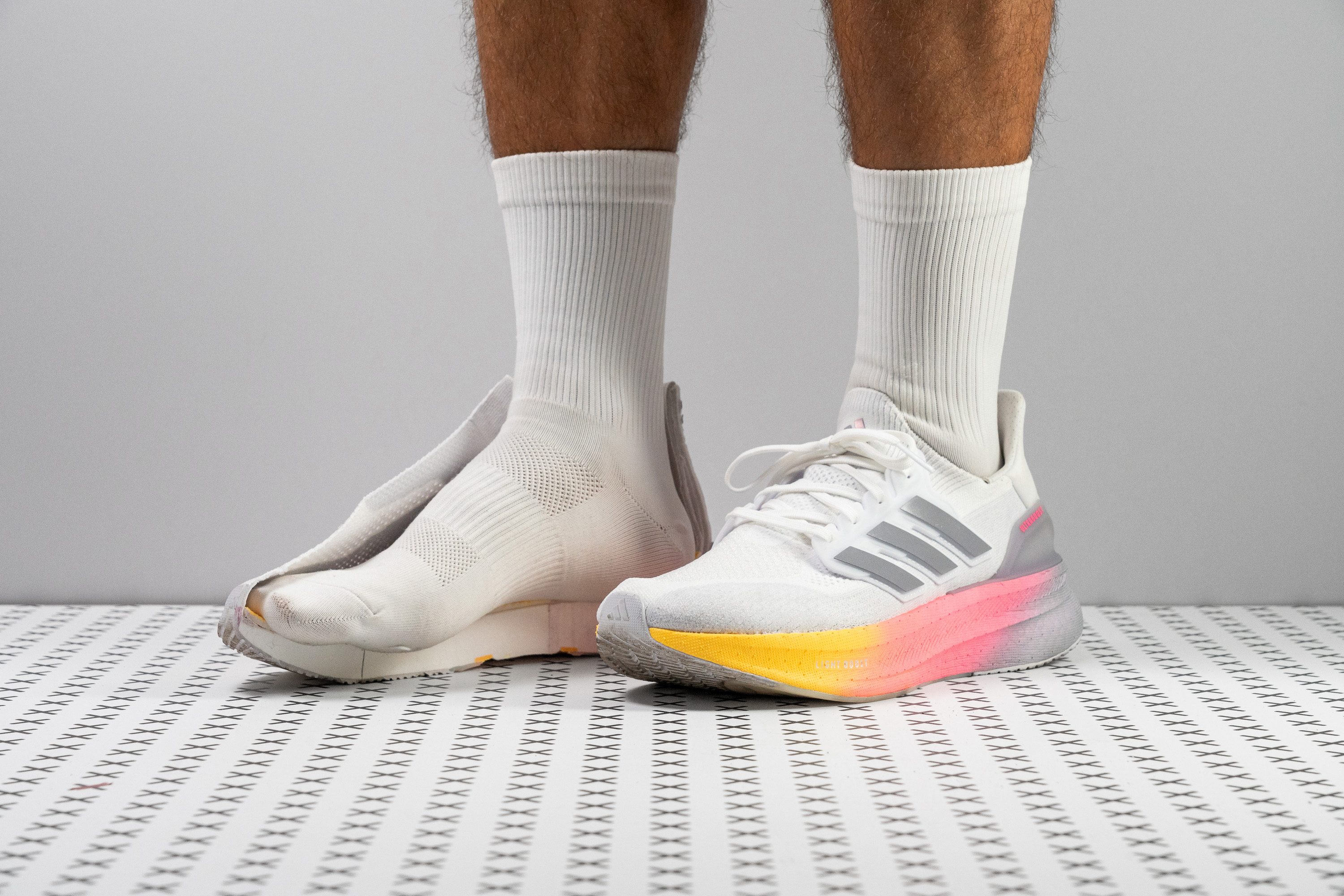



















































What makes it the best?
We found the Adidas Ultraboost 5 as a great companion for burning everyday mileage because of its comfort, flexibility, spacious fit, and high resistance to wear. Backed up by our lab results, it’s easy on the feet with its plush and bendable midsole and forgiving design, making it our top daily trainer among wide running shoes.
The cushion feels so good even as the miles go by because our durometer shows it’s 19.0% softer than average. Besides its plush sensation, it barely resists our movements which makes it suitable for other activities like walking. In our bend test, it emerged 33.5% more flexible than average.
Besides the midsole, those of us with wide feet did not feel any pressure at all thanks to the spacious width of the shoe and the stretchy Primeknit upper. We measured our gel mold at the widest part to be 98.4 mm, which is 3.0% mm above average.
Underfoot, the Continental outsole could take the load of daily mileage. We tested it against our Dremel, and it emerged victorious with only a small 0.8 mm dent, cementing its durability.
However, the shoe feels quite heavy at 10.3 oz (292g). Those who prioritize a lightweight experience should try other options.
Pros
- Enhanced midsole cushioning
- Roomy, comfortable knit upper
- Suitable for daily wear
- Excellent durability
- Optimized for heel strikers
- Superior Continental outsole
- More cushioned than ever before
- Can handle forefoot strikers
- Great for summer
Cons
- Could still be lighter
- Not suitable for fast paces
- Potential for heel slippage
Best stability running shoes for wide feet
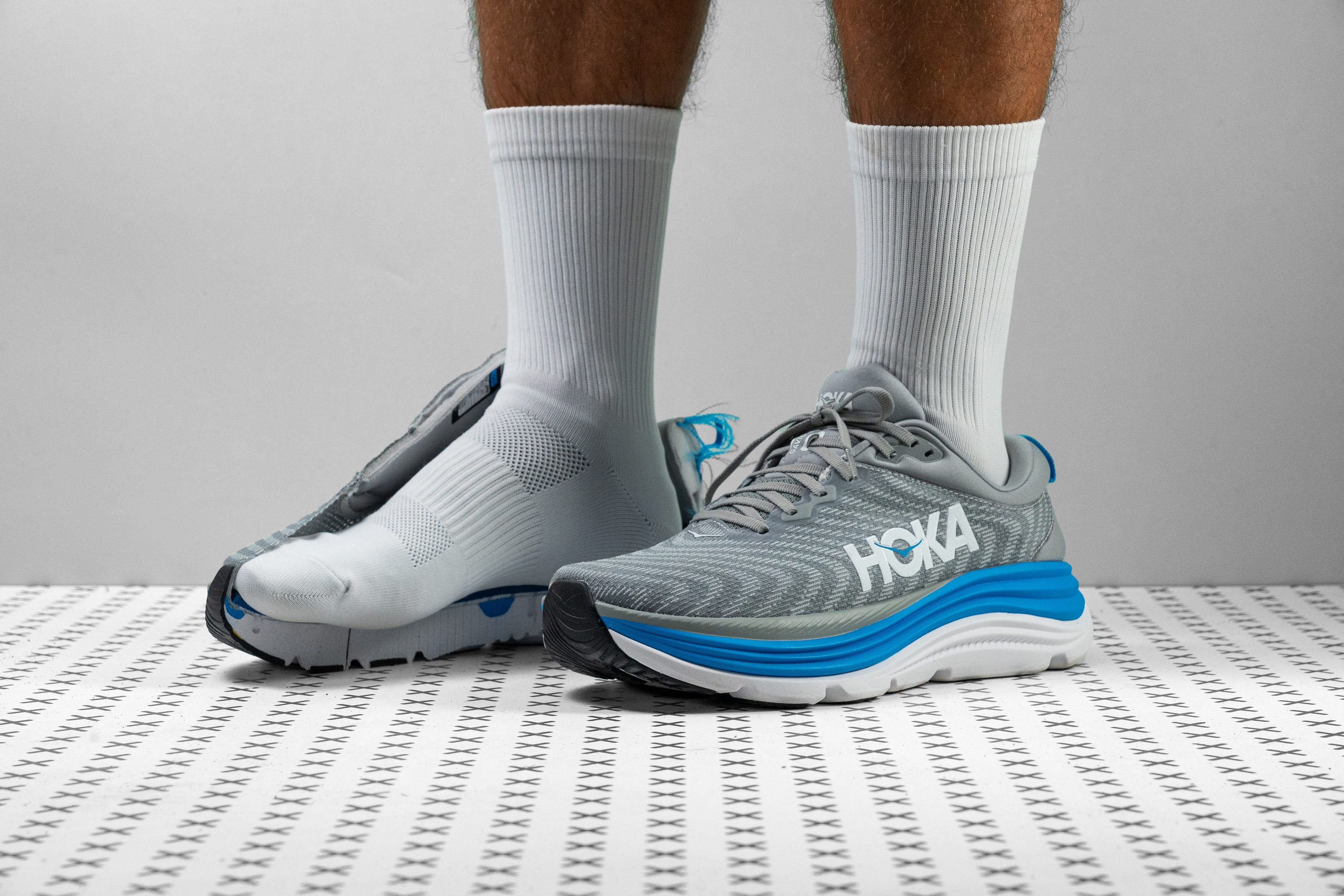
















































What makes it the best?
We searched high and low for the best stability shoe for runners with wide-foot concerns, and our lab analysis and test runs led us to Hoka’s Gaviota 5. With a forgiving fit, subtle stability features, and delightful cushioning, it gives all the support we need without sacrificing comfort.
The midsole felt unrestricted with its wider-than-average measurements of 125.1/106.6 mm. This extra space ensured our safe and sound strides. We also felt centered throughout our runs and our cut-in-half shoe reveals the H-Frame, which gently guides our foot alignment.
Gaviota 5 holds a superior blend of comfort and surefootedness by incorporating dual-density foams. The top layer is a firm 22.0 HA for enhanced stability, while the soft 12.9 HA foam absorbs impact landing.
What also keeps us refreshed is the breathable and spacious upper. Our breathability test reveals a well-ventilated mesh material with a 5/5 rating. Meanwhile, the measurement of the gel mold at the ball of the foot is 99.7 mm, 4.4% wider than average.
We anticipated this cushioned stability shoe to be heavy and unfortunately, it was. At 10.6 oz (299g), it proved to be somewhat burdensome during faster runs.
Pros
- Remarkably stable
- Breathable and comfortable upper
- Lightweight for its size
- Good stability option for forefoot strikers
- Ideal for wide feet
- Excellent for long runs
Cons
- Low drop might pose issues for heel strikers
- Performs poorly in colder conditions
- Not for narrow feet
- Midsole feels flat
Running shoes for wide feet with the best energy return
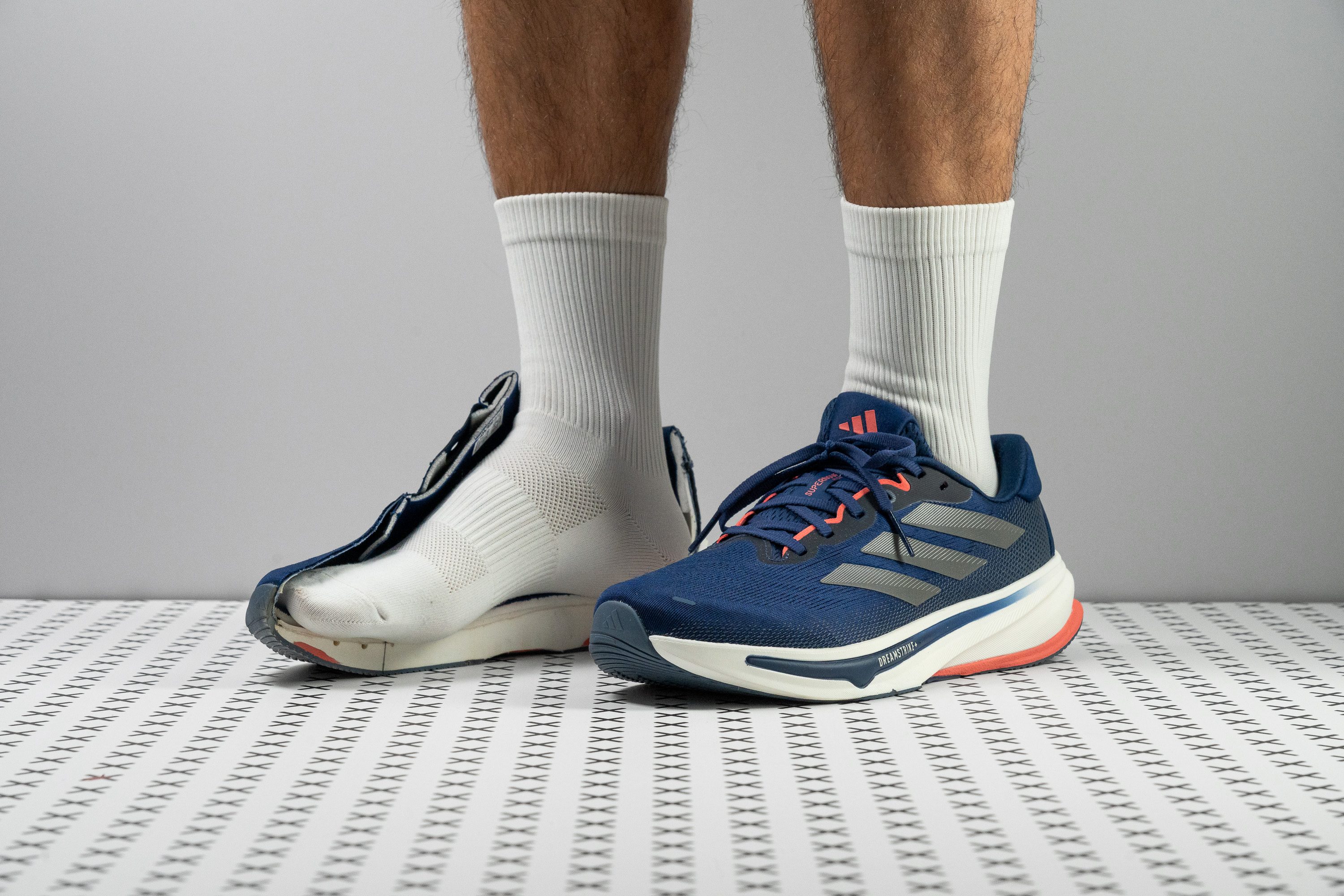















































What makes it the best?
The Adidas Supernova Rise 2 rose to the top of our wide running shoes roster in terms of energy return. It brought a whole lot of responsiveness to our strides without sacrificing comfort. Lab results confirm its smooth ride stems from its flexible and accommodating build.
The Supernova Rise 2 is made for daily training, so it doesn’t have a carbon plate. Its energy return comes from its dynamic cushioning, which returned high scores in our lab test: with 69.5% in the heel and 68.1% in the forefoot. These figures indicate that the midsole offers higher rebound than the average running shoe.
We created a gel mold to accurately measure the shoe’s interiors. Measuring the widest part, we got a max width of 98.7 mm. With 3.4 mm extra room than average, we didn’t have any pressure points on the balls of our feet.
Its malleable midsole offers a pleasantly natural feel, making it versatile enough for travels and walks. In our bend test, we recorded a 51.3% higher flexibility score than average, enhancing its comfort for long hours of wear.
However, its forefoot offers subpar shock absorption. Midfoot and forefoot strikers seeking cushioned landings should try another pair.
Pros
- Lighter than version 1
- Comfortable yet breathable upper
- Cold-proof PEBA midsole
- Stable ride with Support Rods
- Reflective accents for night visibility
- Maintains competitive price tag
- Responsive Dreamstrike+ foam
- Flexible, natural running experience
- Great for walking
Cons
- Outsole lacks Continental
- Not cushioned for forefoot strikers
- Still lacks a gusseted tongue
Best lightweight running shoes for wide feet
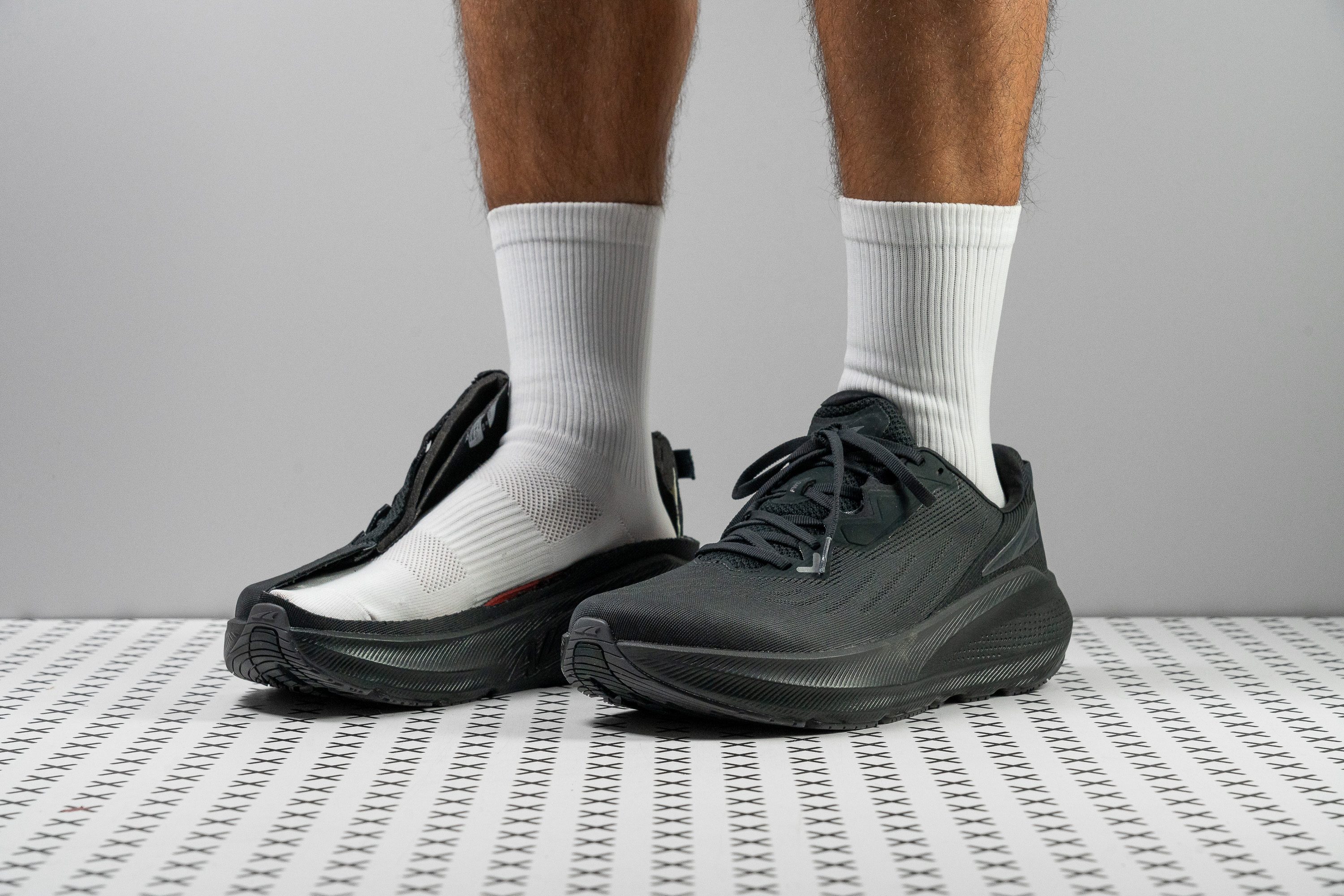











































What makes it the best?
We were impressed by Altra FWD VIA’s agility in our runs despite its generous dimensions. As a result, it’s our best lightweight wide running shoe, which not only boosts comfort but also creates a more stable ride, proven by our lab results.
We verified its weightless feel on the scale with a 9.0 oz (255g) figure, just below average, even with its extra-wide measurements. Our effortless movement is further enhanced by its bendable build, needing only 14.5N force to reach 30 degrees.
Its FootShape design is what makes the FWD VIA stand out, and our gel mold replica validates its accommodating fit. Measuring 100.0 mm at the ball of the foot, it’s much more spacious than the 95.3 mm average, leaving no room for unwanted compression.
Moreover, we also measured the forefoot at 118.0 mm and the heel at 95.9 mm, both broader than average, and boosting our surefootedness. Together with the shoe’s sidewalls and high 4/5 torsional rigidity, excessive lateral motions are minimized.
Unfortunately, its energy return doesn’t match our expectations from the Altra EGO FLO foam. If responsiveness is high on the list, we advise against getting this trainer.
Pros
- Exceptionally spacious toebox
- Lightweight considering its size
- Reliable traction
- Most heel-striker-friendly Altra so far
- Plush step-in feel
- Semi-gusseted tongue
- Stable landings
Cons
- Underwhelming energy return
- Midsole feels firmer than expected
- Durability could be better
- Actual drop differs from stated spec
Best low drop running shoes for wide feet
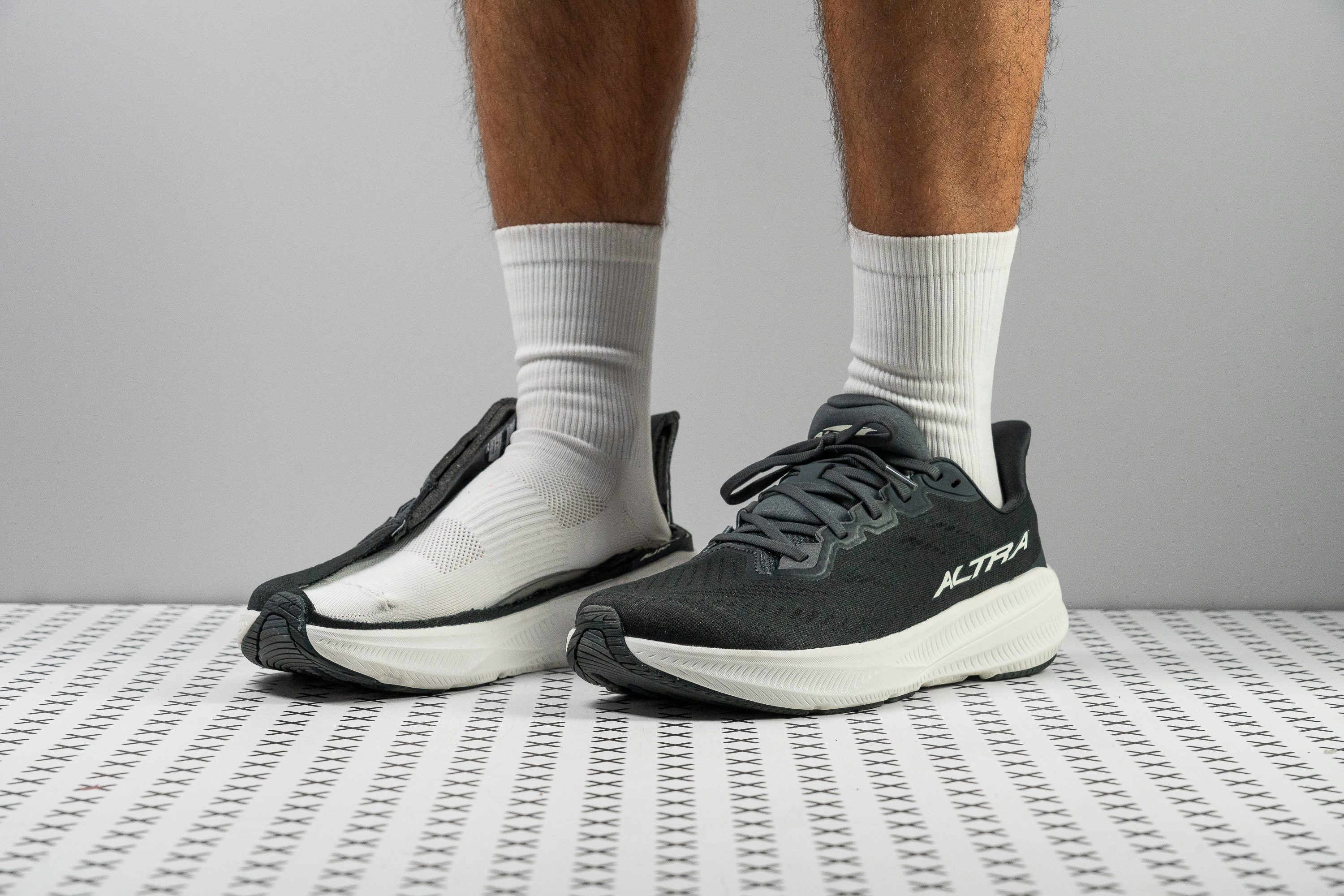












































What makes it the best?
The Altra Experience Flow 2 suits its name well because it offers a fuss-free and effortless sensation with its light and barefoot-like feel. Our lab tests show it’s naturally stable due to its low profile and heel drop, but it feels comfortable due to its flexible and spacious build. It also infuses energy with our every stride. Among wide running shoes, it’s our best low-drop pick.
Experience Flow 2 offers a well-planted and grounded experience due to its low 4.4 mm drop and its minimal 30.3/25.9 mm platform. It felt easy for us to adapt because we had a good sense of the ground.
Its weightless 8.3 oz (235g) figure adds to our agility, further enhanced by the bouncy midsole offering high energy return of 60.3% in the heel and 68.1% in the forefoot. No chances of having a dull ride here!
The bendable midsole makes the shoe suitable for other activities like walking. Confirmed by our flex test, it’s 34.2% more flexible than average.
In true Altra fashion, the shoe is designed to be accommodating to wide feet. Using our gel mold, we measured the widest part at a massive 99.1 mm. Its unrestricted feel makes it a comfortable place to be in all day. However, we can’t recommend long hours of wear in warm weather. If flowing air is a priority, we recommend looking for more breathable pairs.
Pros
- Good energy return (finally!)
- Roomy, foot-shaped toebox
- Feather-light build
- Smooth, natural ride
- New plush EGO P35 foam
- Perfect bridge toward zero-drop shoes
- Comfortable for daily wear
- Flexible build
- Massive improvement over v1
Cons
- Poor outsole durability
- Not ideal for heel strikers
- Toebox height may feel slightly low
Do you really need wide running shoes?
Just because it might sound like a good idea, wearing wide running shoes might not be the right thing to do. Check whether you actually need them.
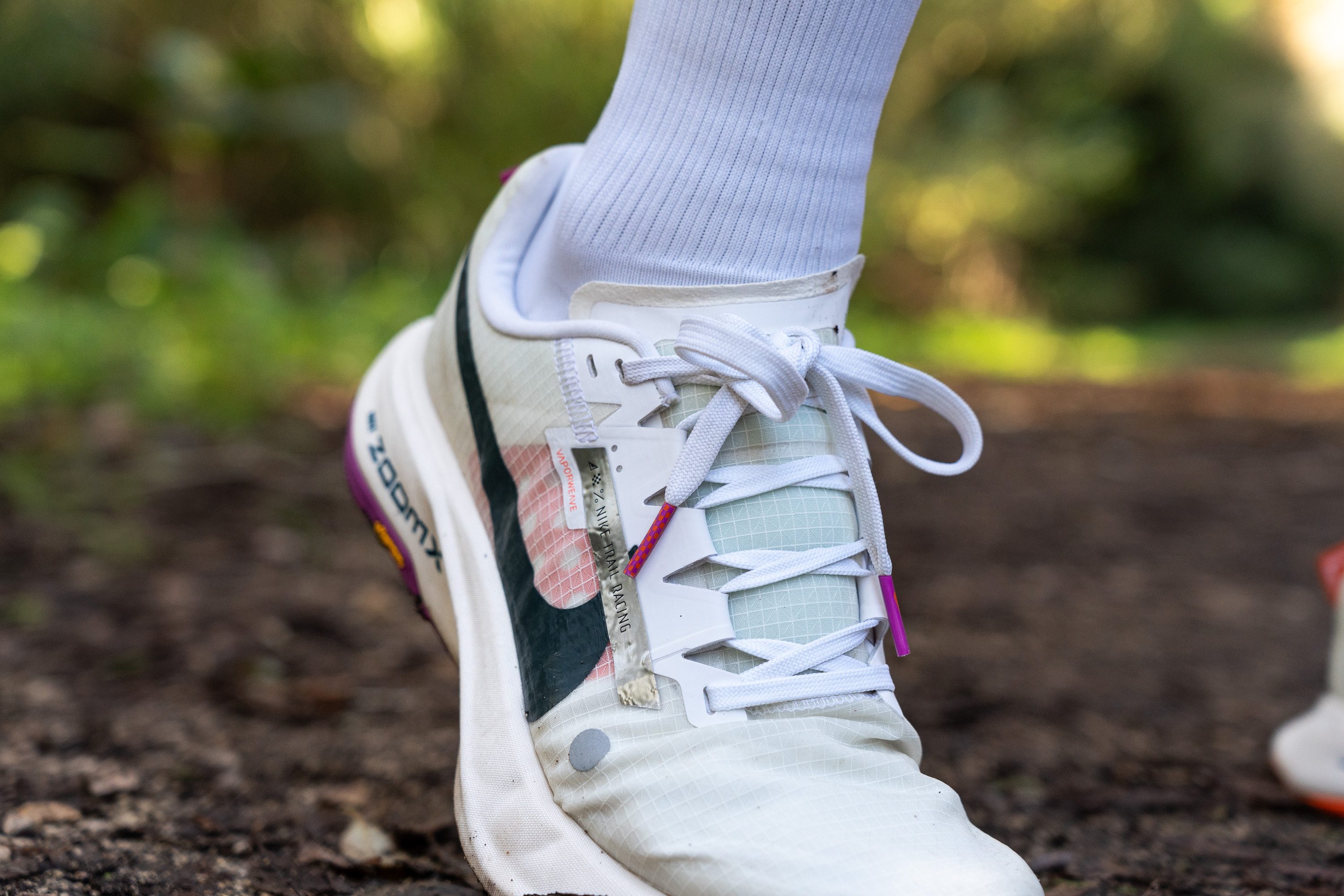
You can take the insole out of the current shoe, stand on it, and see if any part of your foot hangs over the insole. If it does, you might need wider shoes.
A few other ways to tell:
- Burning sensation all over your feet because the shoes are tight all over.
- The moment you put on the right-size shoes, you want to take them off because they are so tight. And sizing up isn’t helping; they are long but still tight.
- You feel pressure on the instep even when the laces are not over-tightened.
- Your toes are cramped in the toe box or your pinky toe is trying to escape from the toebox. This may be fixed with a wider toebox (and not a shoe that's wide overall).
If you answered one or more questions with Yes, then welcome to our guide to wide running shoes.
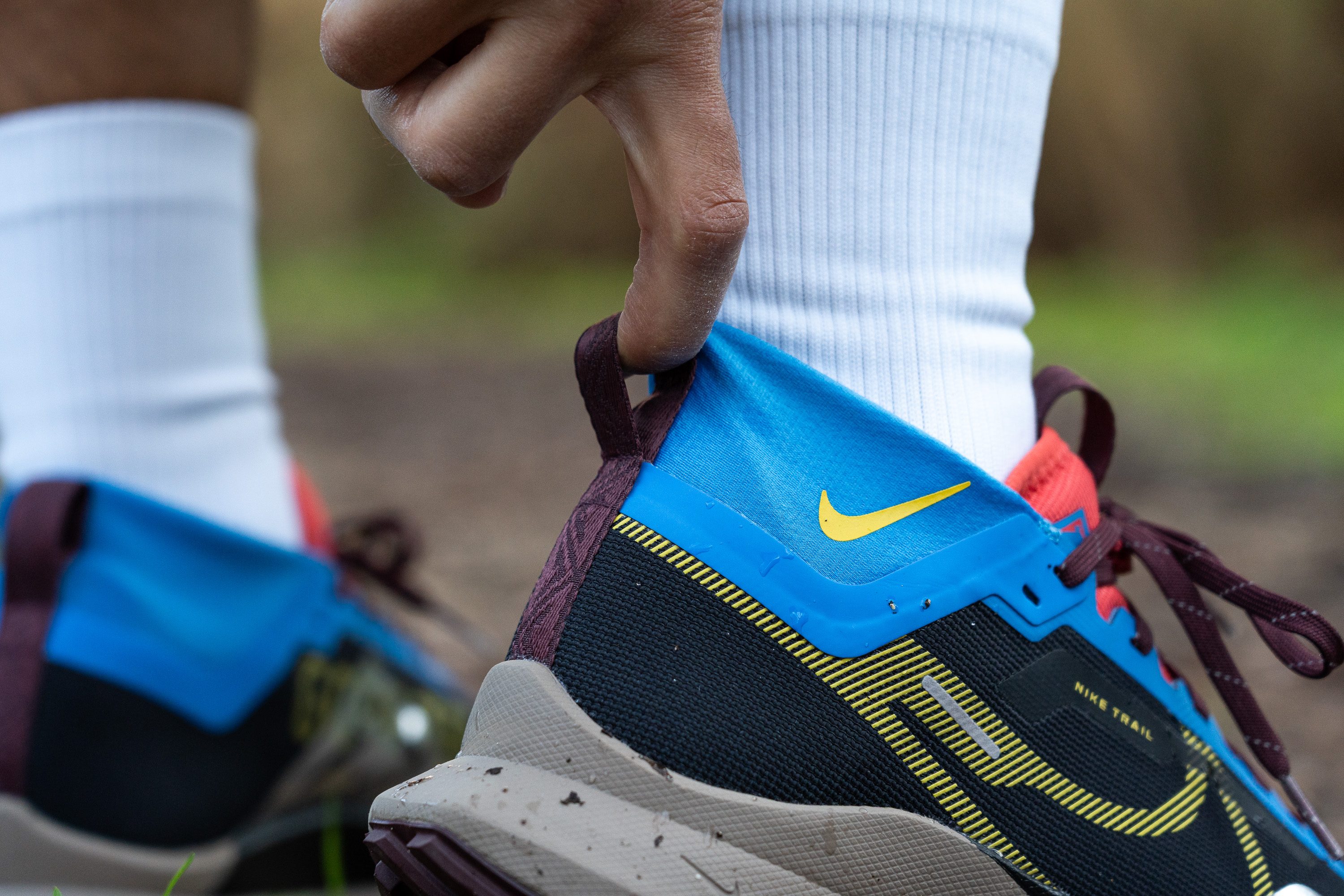
How to recognize wide running shoes based on industry labels
If you need wide running shoes, look for the labels below. You can find them on the shoe box, on the shoe itself, and in the description (when buying online) as a part of a shoe name or under more details.
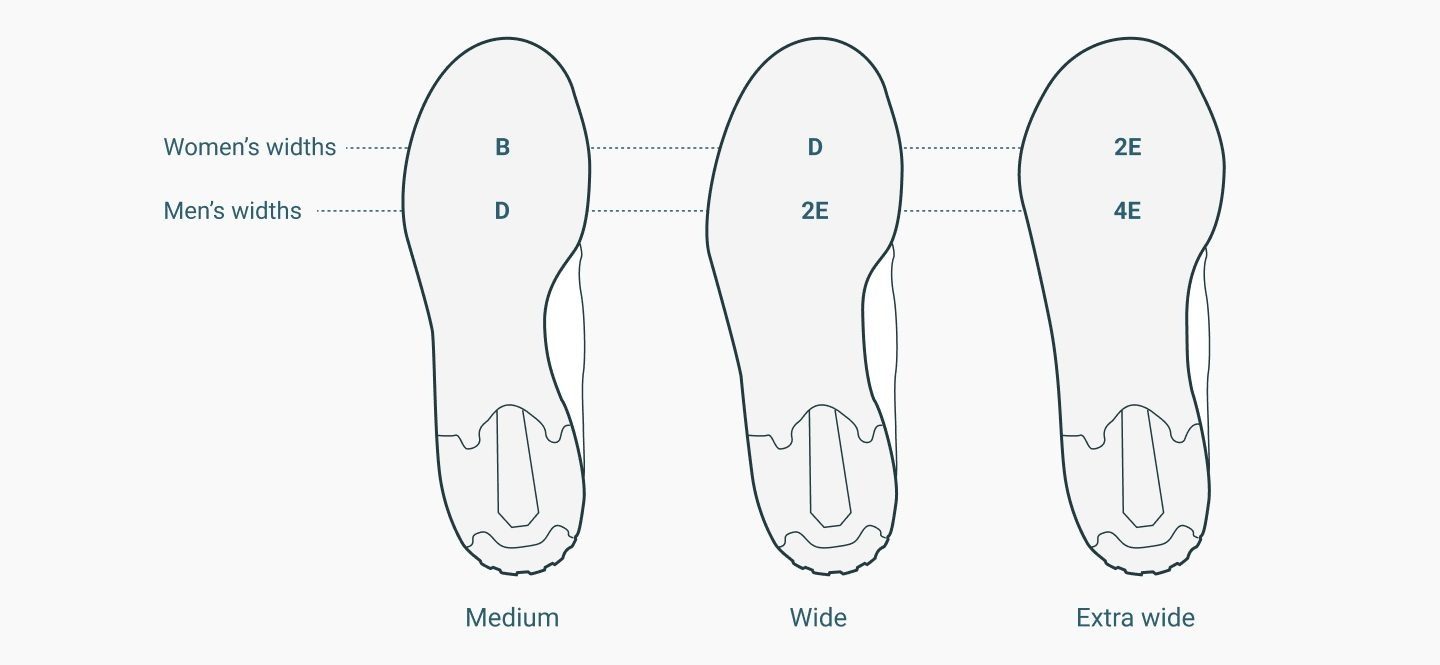
If you’re a man, look for 2E for wide shoes and 4E for extra wide running shoes. If you’re a woman, look for D or 2E, depending on whether you need wide or extra-wide shoes.
|
Width |
Narrow |
Medium/ |
Wide |
Extra wide |
|
Men |
B |
D |
2E |
4E |
|
Women |
2A |
B |
D |
2E |
Industry labels for different widths of running shoes
Women and men have different labels because their feet are different. Women’s heels tend to be narrower and forefoot wider.
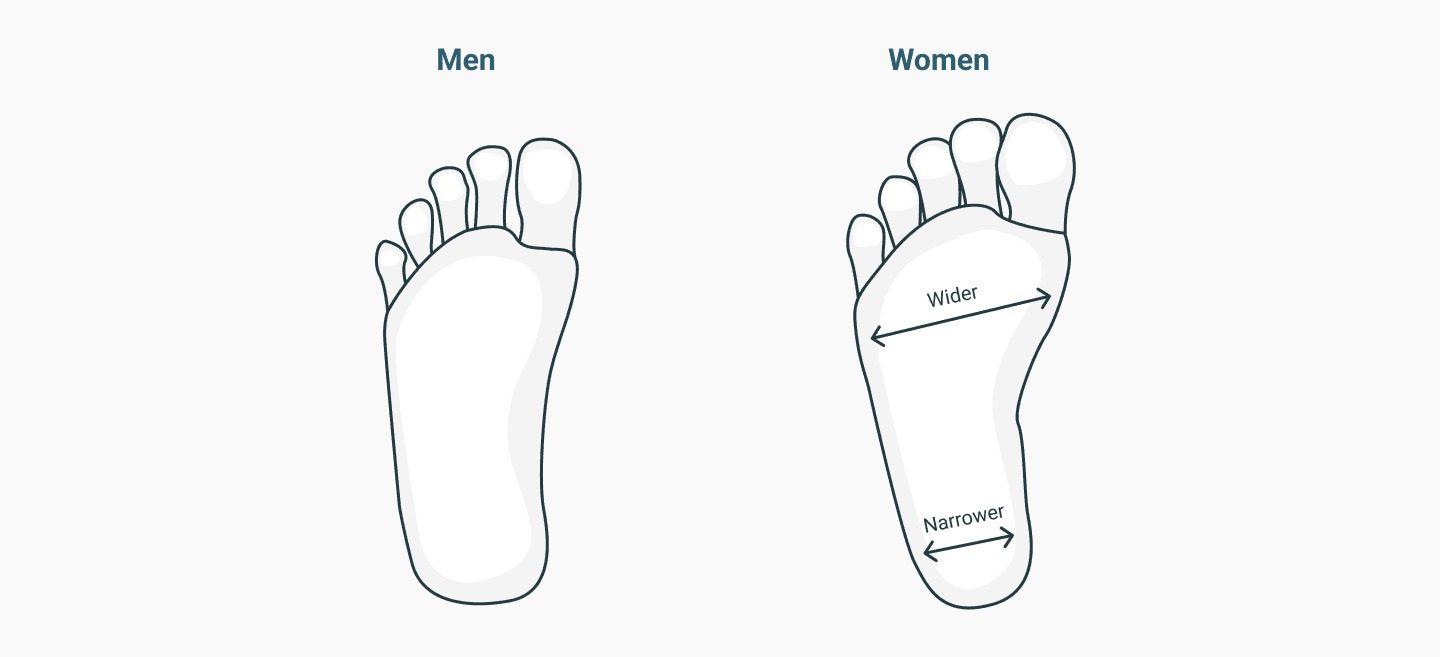
However, this generalized difference is often not reflected in running shoes, so many runners opt for a shoe made for a different gender with no issues.
Must-know before buying wide running shoes
Even when you decide or realize you need wide running shoes, it's important to know that, in many cases, brands don't make different (wider) casts. The platform stays the same while the upper is given more volume. If you're really curious about this, it's best to ask the brands themselves about exact measurements and changes about the model you're considering buying.
However, this voluminous upper often does the trick and many runners enjoy the running shoes that create more room by having more upper material and not wider midsoles.
When it comes to our lab data, in every shoe review, you can check 1) the width of the shoe where it's the widest, and 2) the width of the platform.
Precise lab measurements and shoe recommendations
In the lab, we measure the width of the shoe in 2 places: where it's the widest (shoe width) and at the big toe (toebox width). All the test results that you see are based on a US 9 men's running shoe in medium width.
We pour our special gel into the shoe and freeze it with the shoe. This allows us to have a mold of the shoe's interiors that we can work with (take measurements of)
Once the gel sets, we can measure the width of the shoe.
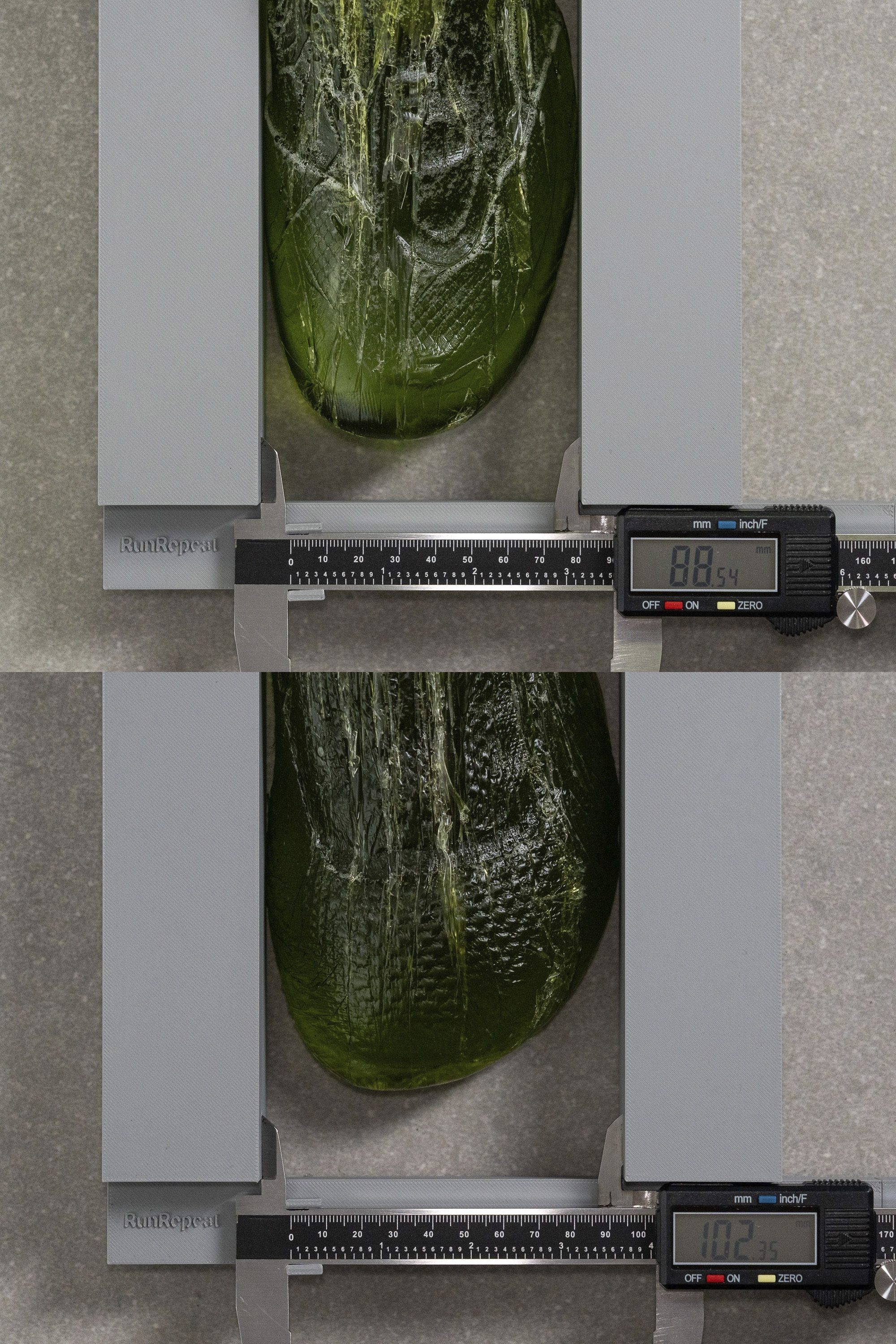
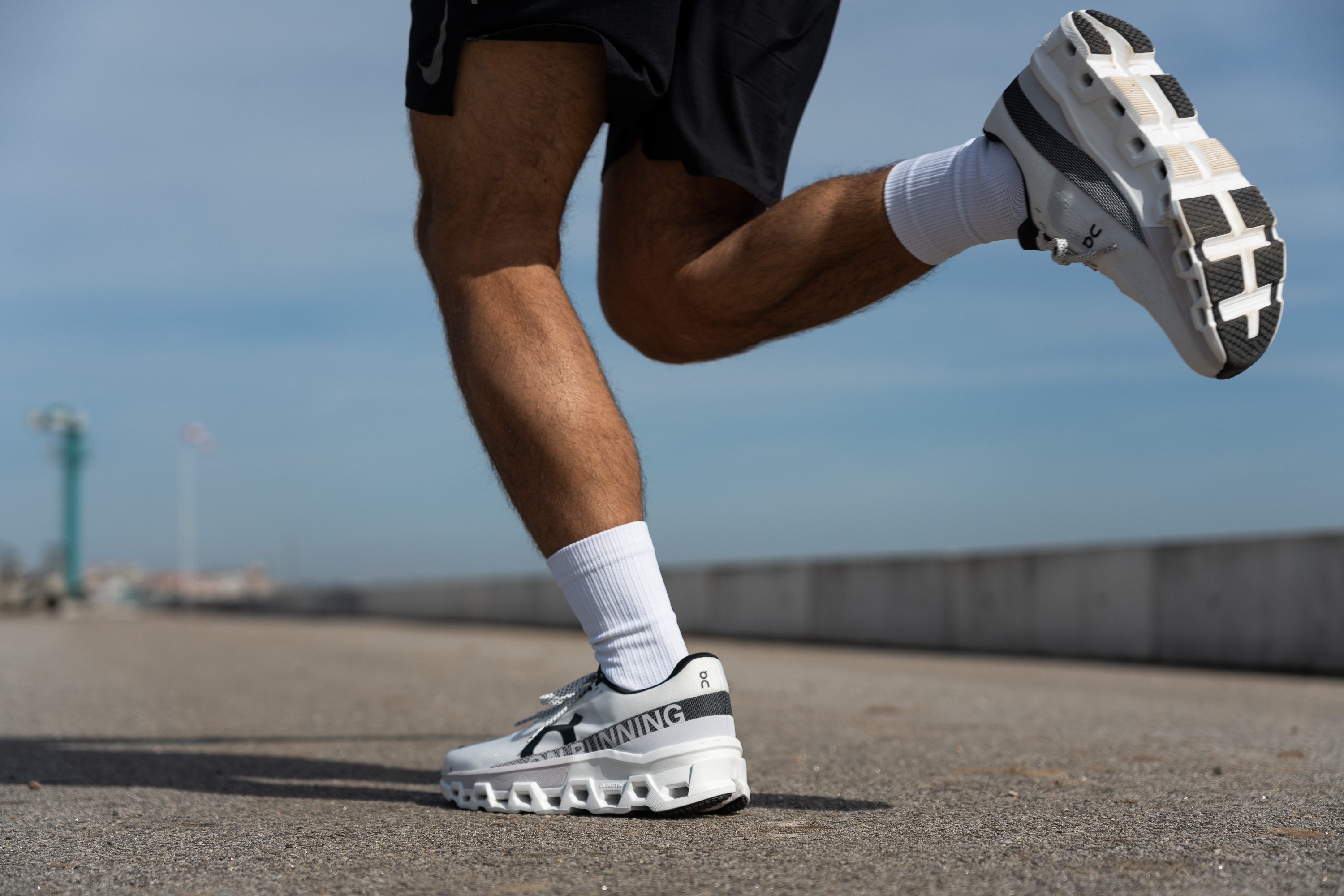
Road running shoes for wide feet
Here, we list (and automatically update) the widest daily running shoes.
If you’re looking for a wide tempo shoe, here are the top 10 from our database. This table is dynamic, so if a new shoe that comes through the lab falls into the 'wide' category, it will be here.
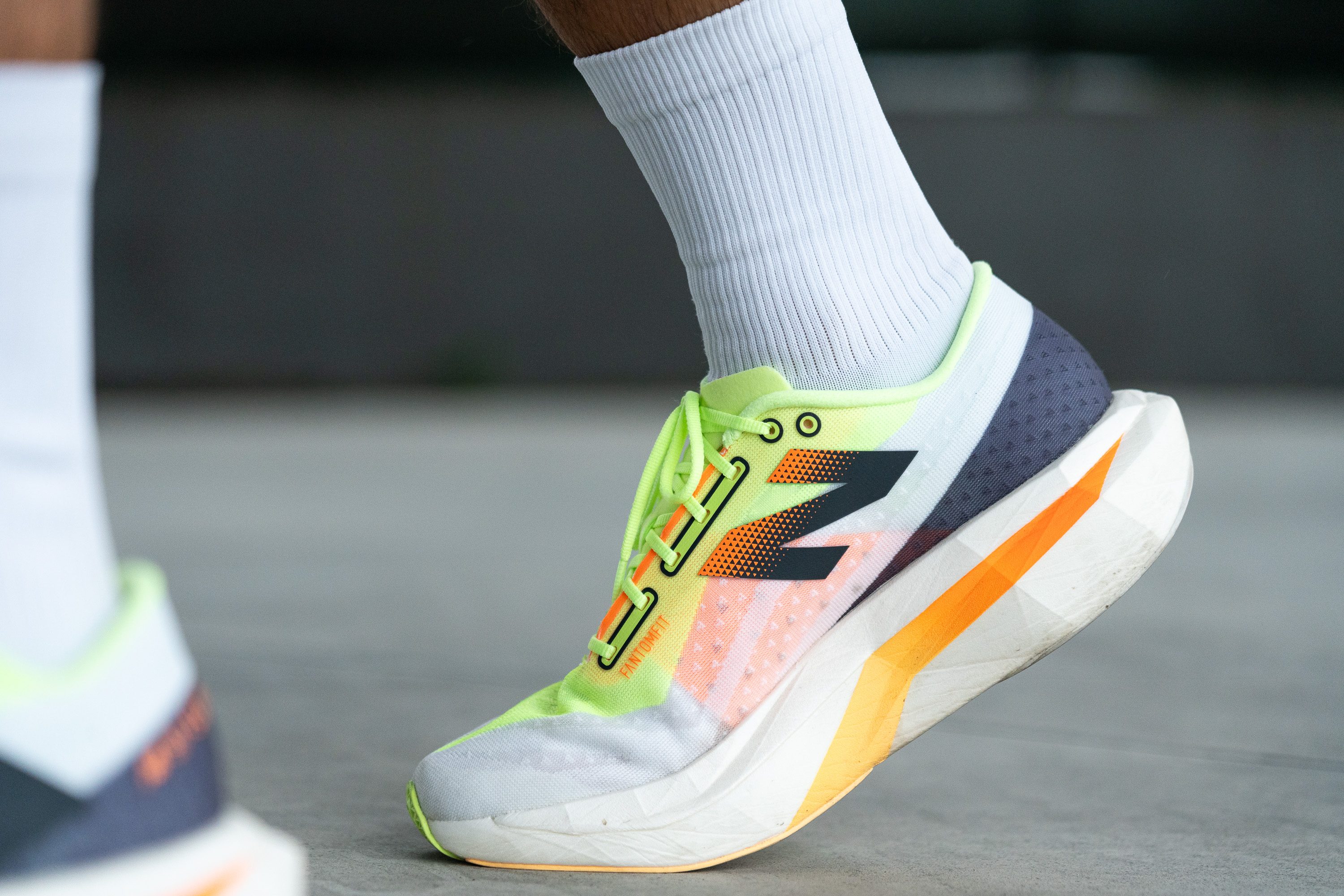
Although races, especially shorter ones, ask for a snug and aggressive fit, some find it too uncomfortable and maybe even painful. If that someone is you, here’s a list of the widest competition running shoes.
The list is short because, as already mentioned here, race shoes are usually more aggressive.
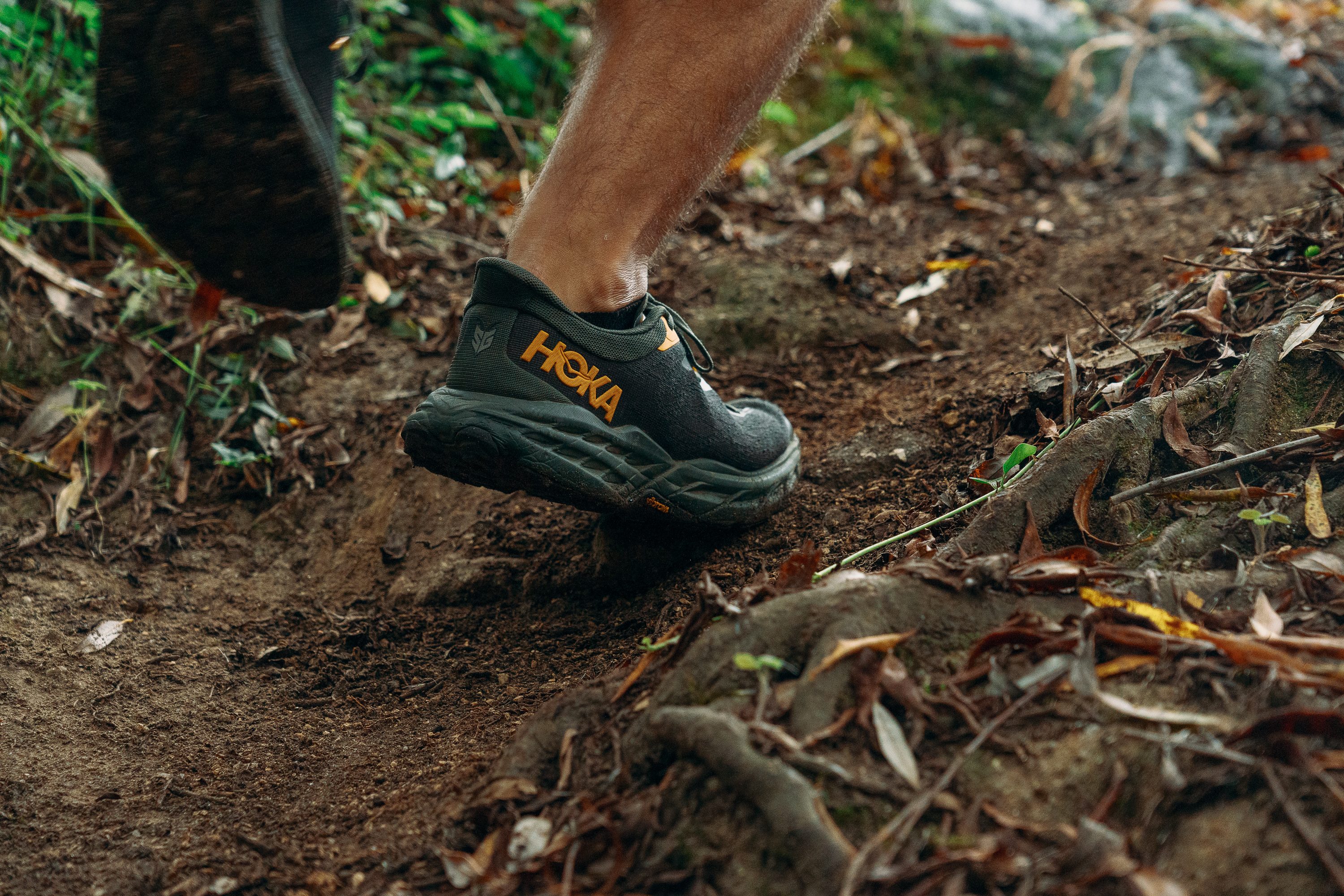
Trail running shoes for wide feet
In trail running, it’s even more important for the fit to be just right because the terrain is uneven and ever-changing. Sliding and slipping can have more serious consequences than when running on the roads.
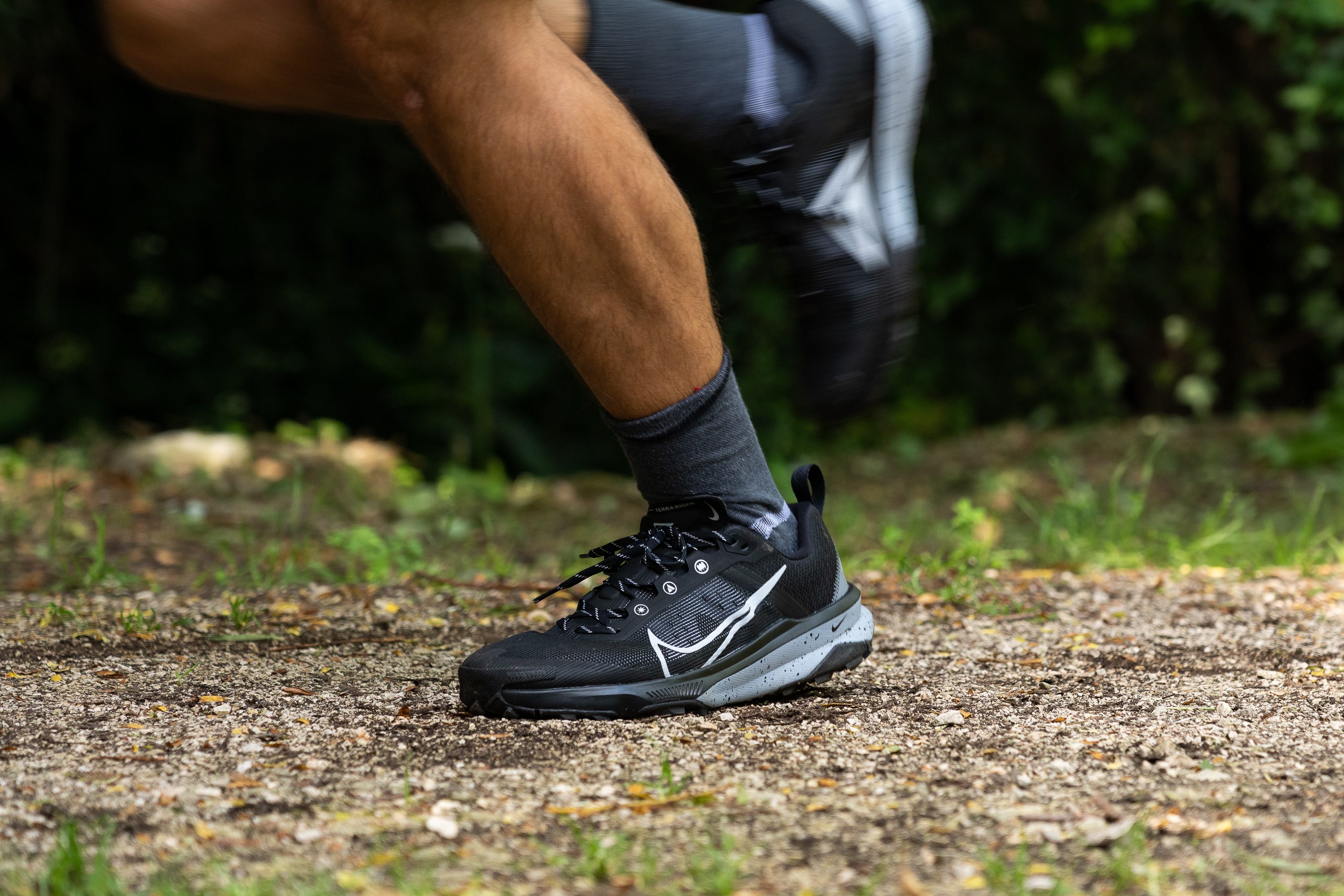
This also means it’s very important not to go too snug because the pressure points can become unbearable and end with blisters (best-case scenario).
Here’s our list of the widest trail running shoes. This list is dynamic, which means whenever we test a trail shoe that's wide enough to end up here, it will.
Wide shoe does not necessarily mean a wide toebox
Some running shoes that are classified as wide can have a somewhat narrower toebox. If this worries you, you can also look at the width of the toebox, which we measure at the big toe.
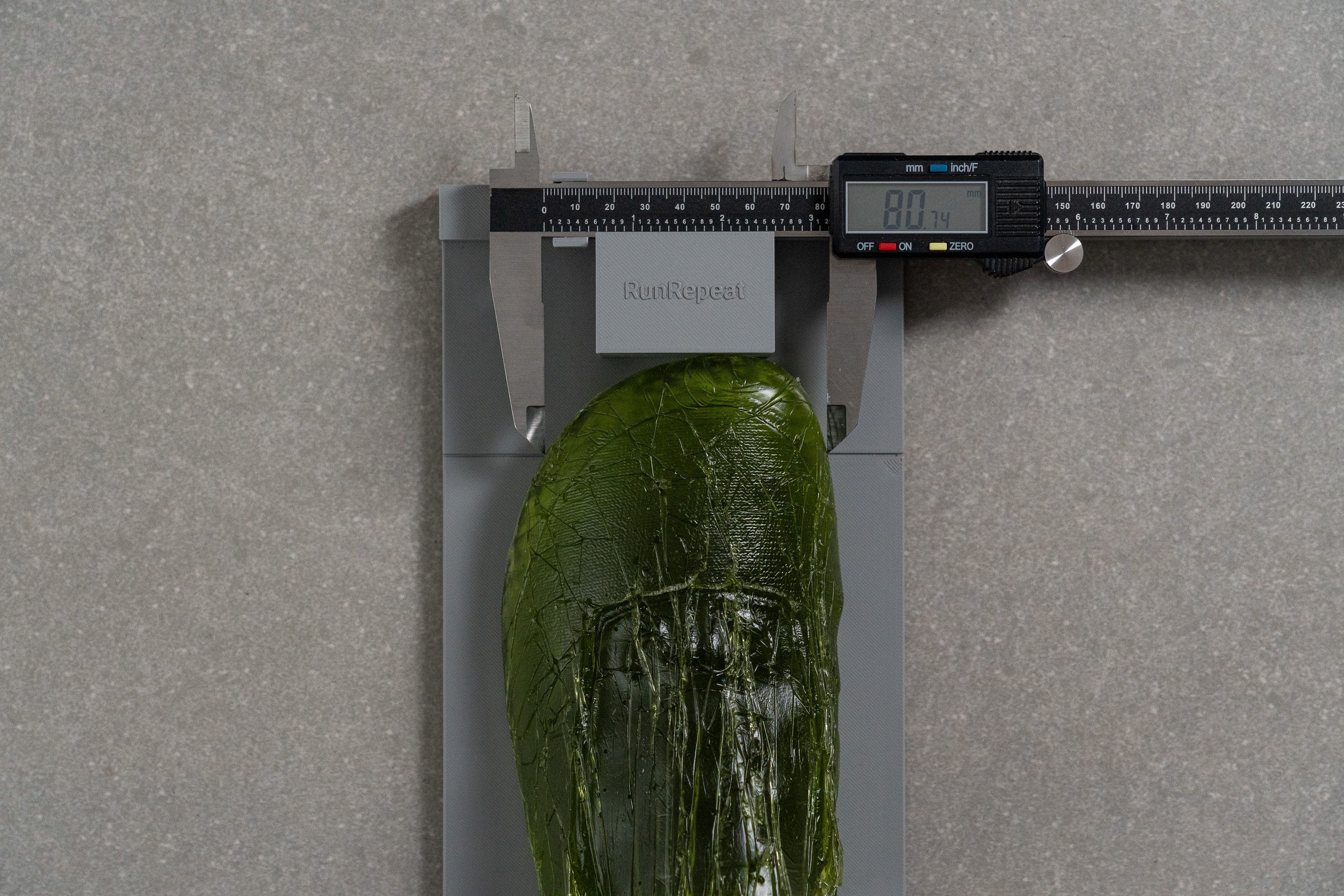
Basically, the smaller the difference between these 2 values, the less tapered the toebox. If you have wide feet and a wide toebox, it's best to look at both values and find the biggest ones.
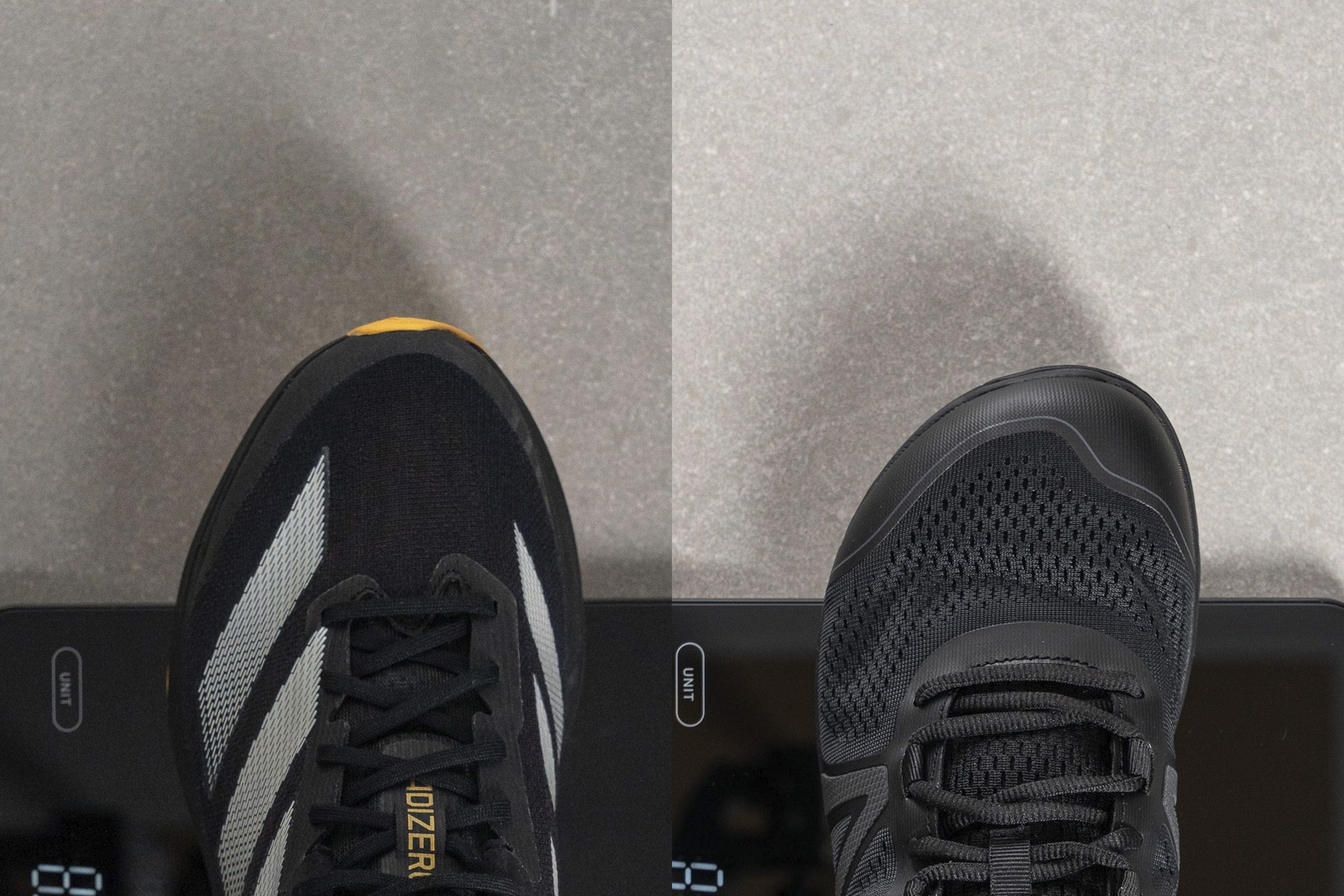
If you're actually looking for a wide toebox, we recommend reading our guide Best running shoes with a wide toebox.
Midsole width in wide running shoes
Sometimes, the knit upper creates the feeling of a wider running shoe. This is great, as knit is softer and more pliable. But it can happen that the foot is actually "escaping" from the shoe or stretching the upper a lot while resting on the not-so-wide platform. If this worries you, you're in the right place!
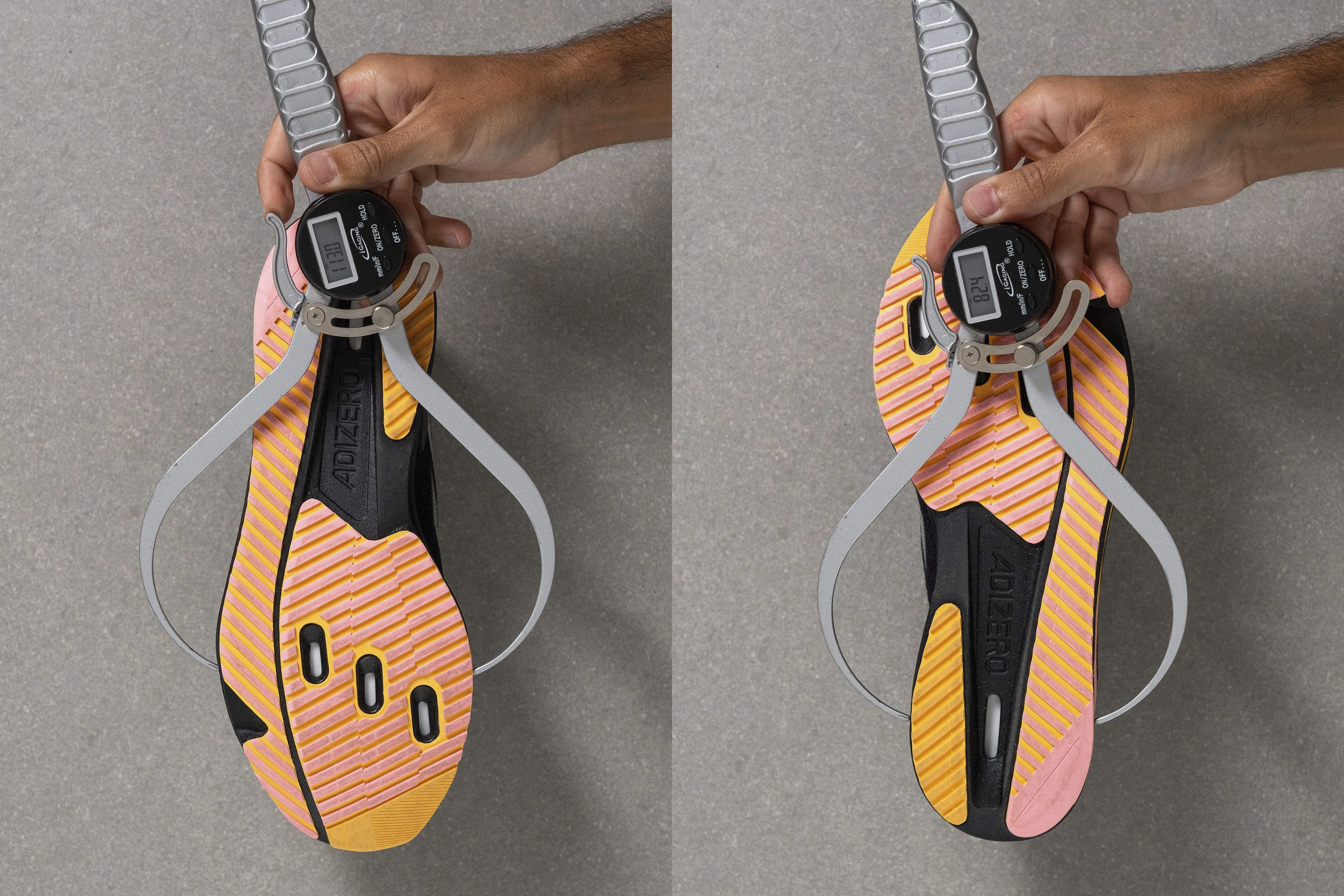
If you land on the heel, we recommend finding running shoes with the widest platform at the heel.
If you land on the forefoot, you may want to look for a wider platform in that place.
Weight of running shoes for wide feet
Wider platforms mean more planted landings, but depending on the foam type, midsole design, and the amount of rubber on the bottom, they may also mean more weight.
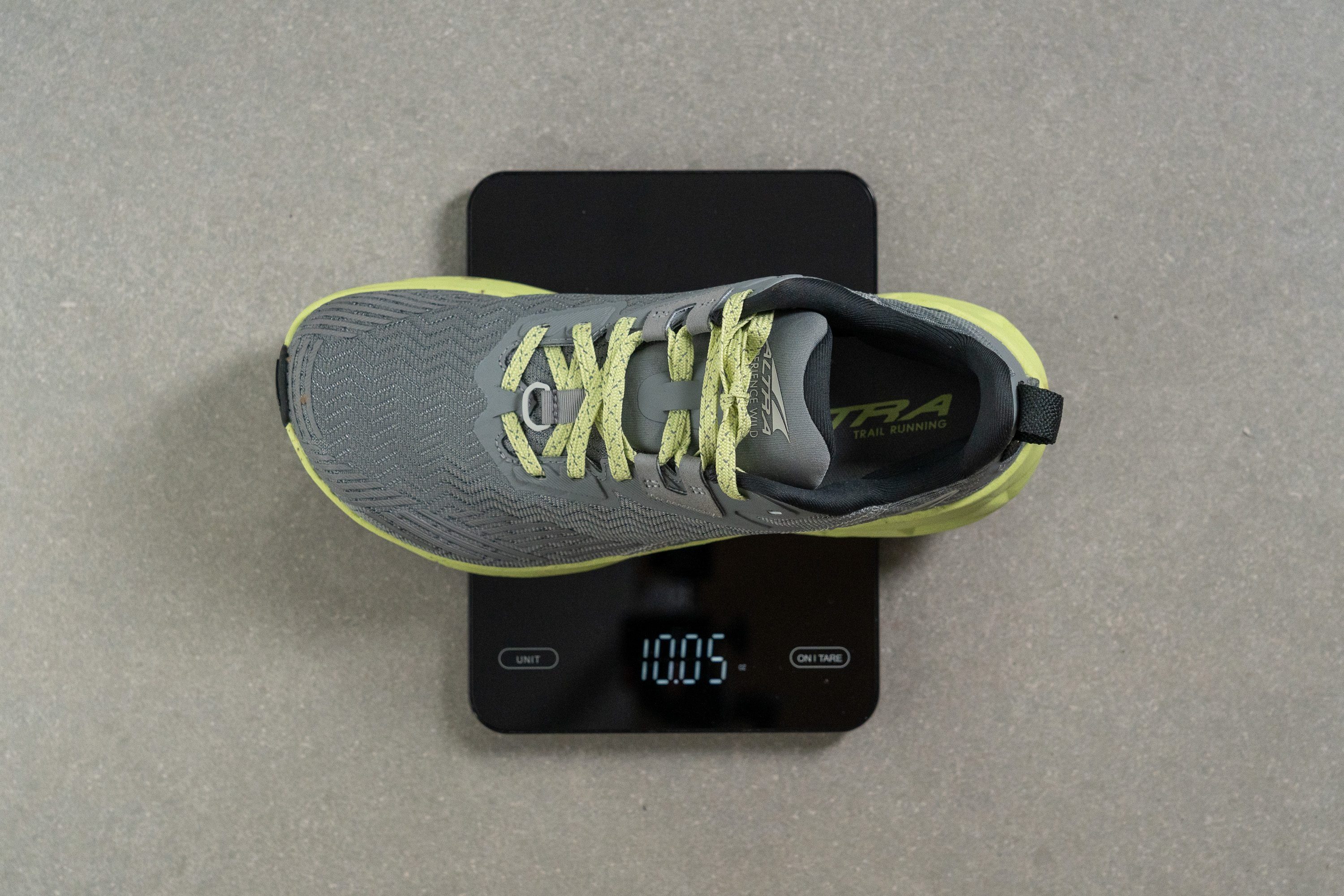
While heavier shoes often offer very valuable features, like stabilization technologies, structured upper, and more padding for comfort or protection, what we recommend avoiding is those that are too heavy, meaning they feel like they are weighing you down. This is very subjective, of course.
Things that will make running shoes lighter are: midsoles that have chunks cut out to save weight and/or make them more flexible, less rubber on the outsole which reduces durability of the shoe, less cushioning making the running shoes closer to the ground or even minimalist, less padding which may affect and lower the comfort levels, etc.
Here you can find the highest wide running shoes across different categories.
Breathability of running shoes for wide feet
If you often struggle with sweaty feet, soaked socks, or maybe even running shoes that are not warm enough, we've got you covered. In our lab, we pump the smoke into the toeboxes and assess the breathability based on what we see.
Testing the breathability of wide running shoes
Based on how much smoke comes out and at which pace, we assign a breathability rating of 1-5 to each shoe, 5 being the most breathable.
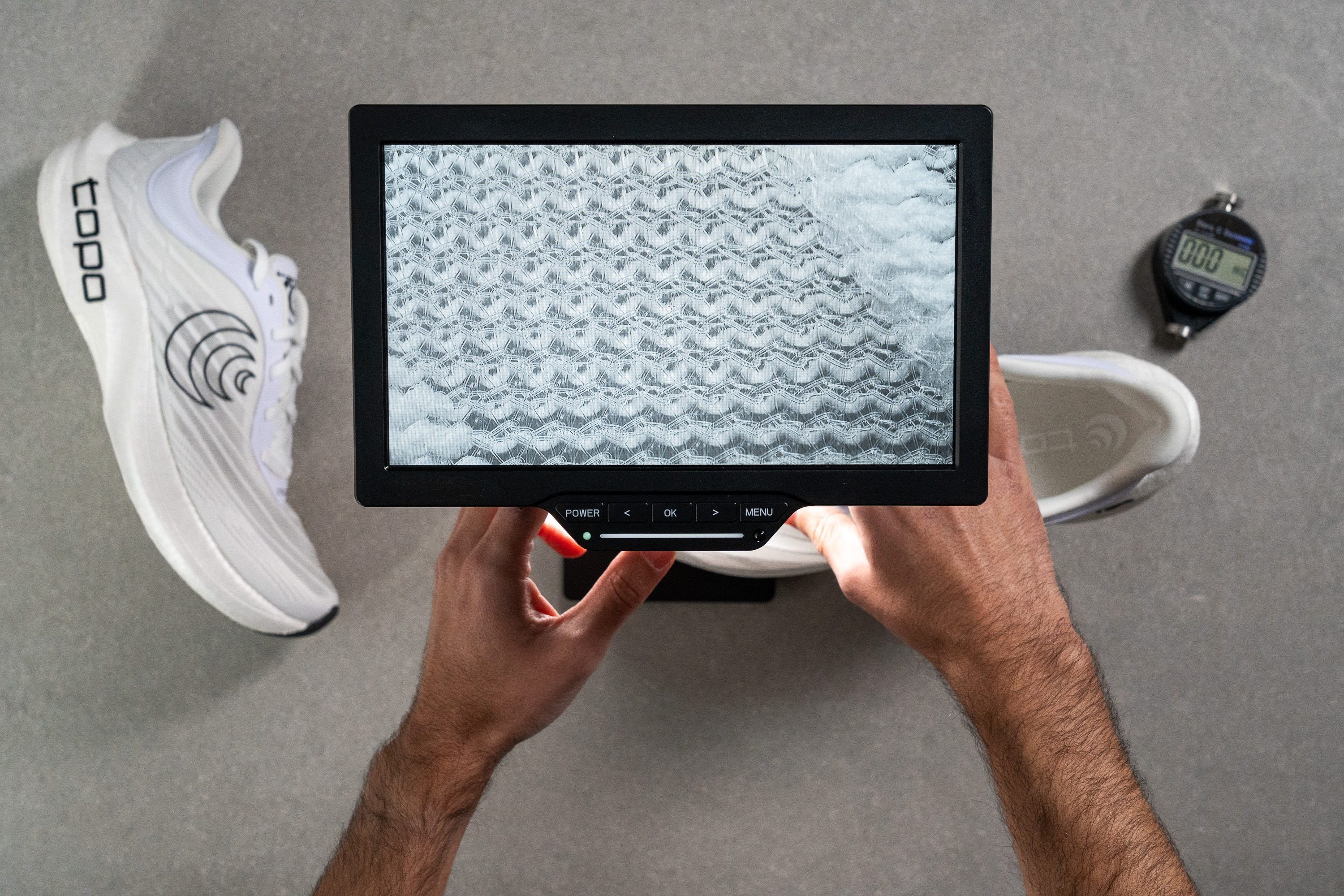
We then also look at the uppers under the microscope to better understand what's going on. Sometimes we discover that what looks like ventilation holes are actually holes wannabes, as we notice a 2nd layer at the bottom that shuts the holes entirely. Or, we see that what seems to be a tightly packed upper is actually a material with a rather loose structure, which makes it highly breathable.
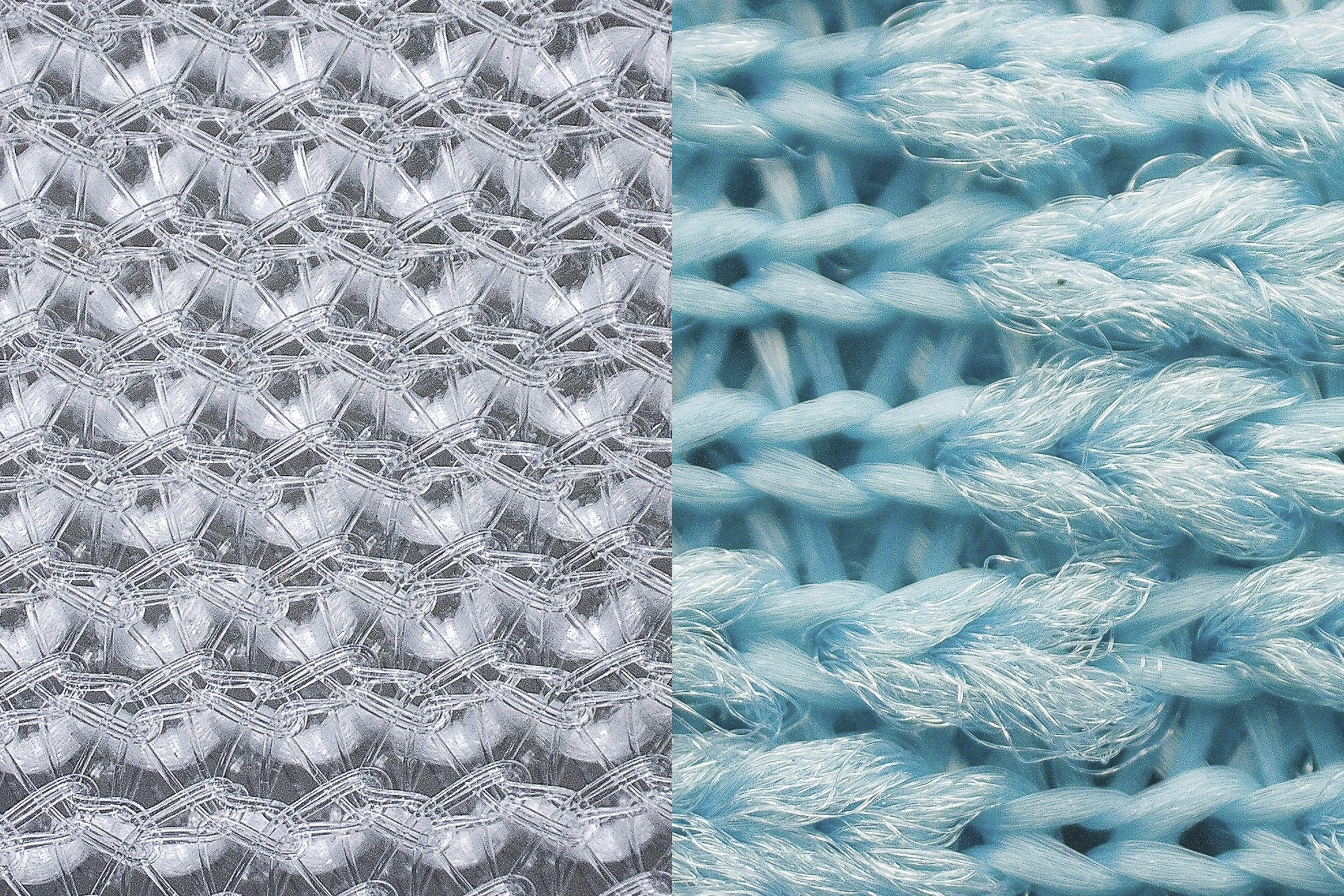
When is wide too wide?
When you can’t achieve a proper and secure lockdown in your running shoes. You experience:
- Heel slipping
- Feet sliding from one side to another in the shoe
- Toes have too much wiggle room, so you feel insecure and like you’re losing grip, especially on the trails
- Changing the stride because you’re trying to compensate for a fit that is too loose which results in premature foot/leg fatigue
- Your ankles might be twisting/turning more often because the shoe isn’t locked to your foot properly.
- You’re trying to grip the ground using the toes, which results in pain.
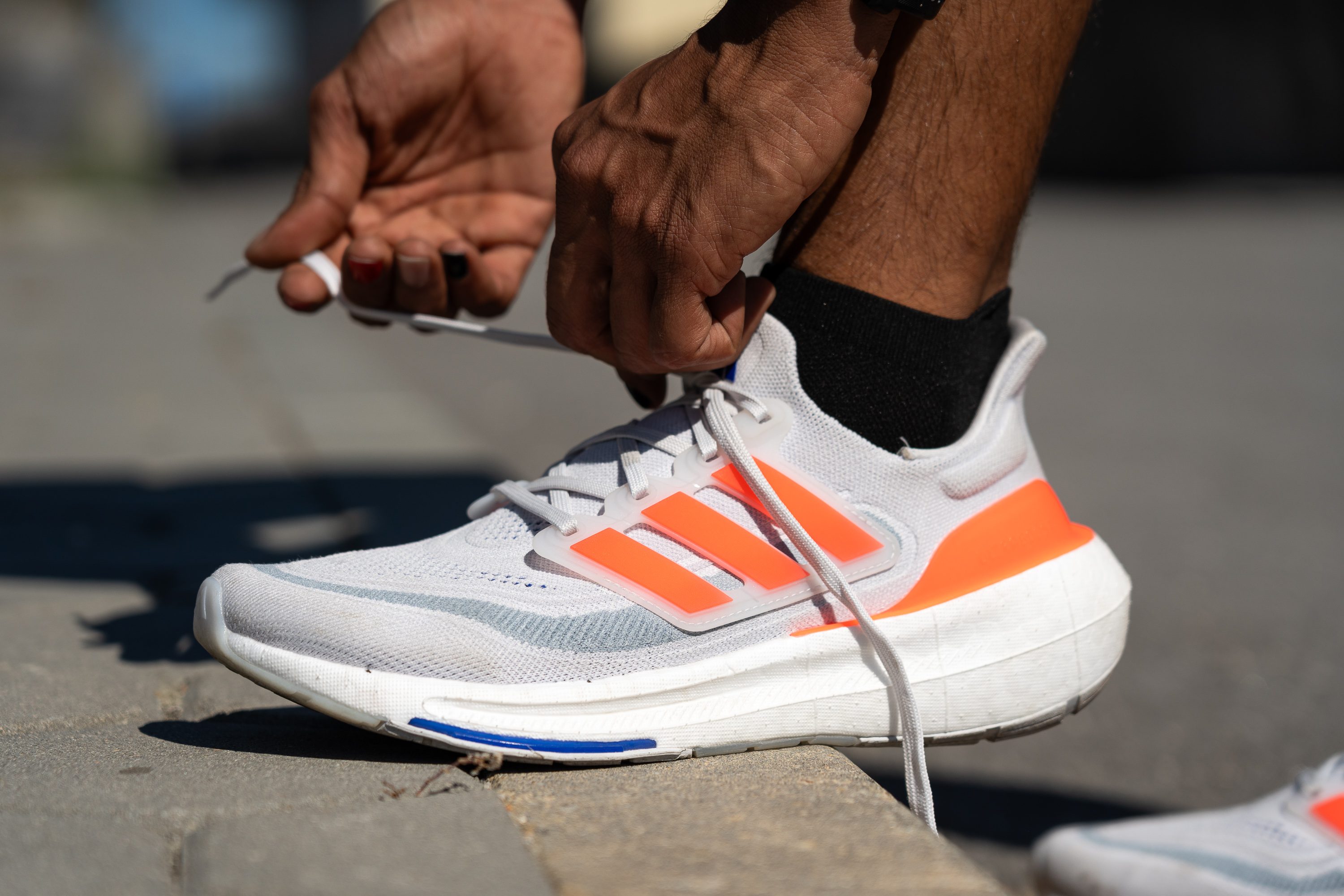
A fit that is too loose brings unnecessary (big) risk to your runs.
